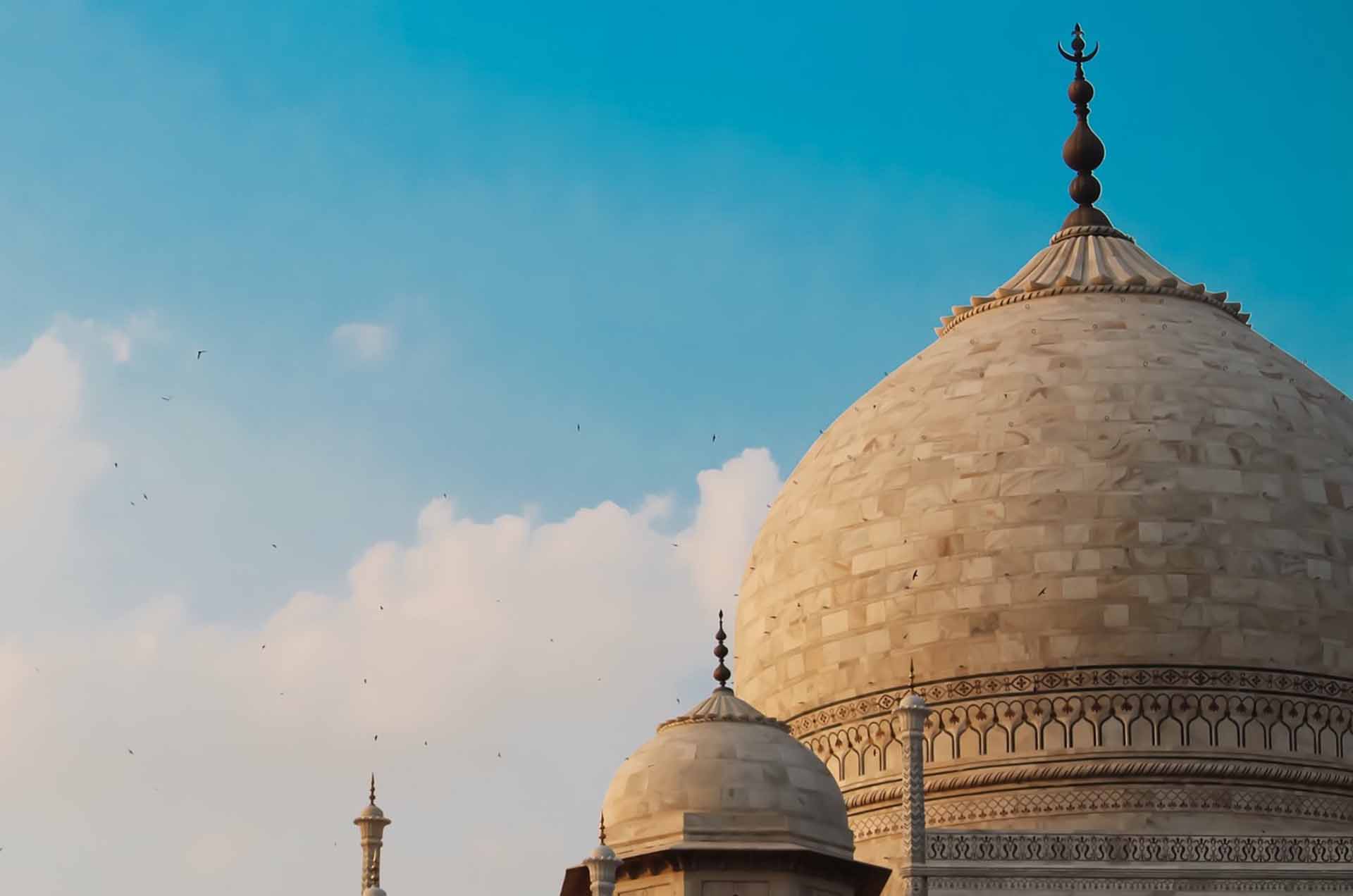Architecture
THE GRANDEUR OF THE TAJ MAHAL
What is it about the Taj Mahal that makes its silhouette against crystalline blue skies instantly recognizable by the world? Though you may have not yet travelled to India, the blooming white dome of the Taj Mahal, flanked by minarets and calmly mirrored in the world’s most famous reflecting pool, is an image you know.
One might wonder how the construction of such a magnificent project could be funded. Costing an estimated – and astonishing – 5,000,000 rupees, every rupee spent was carefully allocated according to service. This included a budget for the Hafiz, those employed solely for the purpose of constant prayer for the soul of Mumtaz Mahal, for whom the entire project was begun. The Mughal Empire is known for its incomprehensible wealth, and Mughal shahs were extravagant and demonstrative in their luxury. All of Europe combined did not produce an equal amount of gemstones, pearls, and other valuable commodities as the Mughal Empire, enabling the shahs to commission whatever they pleased, at any scale. Shah Jahan took this liberty to an extreme in memory of Mumtaz Mahal, ensuring that she would be forever entombed in not only glory…but gold.
THE TAJ MAHAL’S ENDURING SPLENDOUR
But what is it – besides a generous budget – about the Taj Mahal that has enchanted the world for so long? Certainly, there are many other buildings in the world that are majestic, full of symbolism and historical significance? The answer, of course, is yes. However, few other sites in the world have remained intact in such splendour. Few – if any – can boast such an ideal integration of structural detail and symbolism. Or of architectural expertise and execution. The architects of Shah Jahan followed did not reinvent the wheel when constructing the Taj Mahal – they perfected it.
The classical Mughal architecture relies on order. The Taj Mahal is particularly beautiful because of its careful balance of arithmetical lines and divisions and soft convex curves. The mausoleum complex depends on bilateral symmetry, in which two mirroring features are planted in relation to a larger, central feature. In the Taj Mahal’s cause, the central feature is the mausoleum proper – the iconic, domed tomb of Mumtaz Mahal, finished in 1643.
HARMONY, INSIDE AND OUT
To embody the harmony of many parts – an ideology important to Shah Jahan’s imperial ideals – the mausoleum is flanked by two buildings. To the west is a mosque of red sandstone, and to the east is the jawab or “answer” which is thought to have functioned as a guest house. It is believed that the main reason for building the jawab was to achieve an architectural harmony so essential to Mughal design. From the north, the viewer can see the magnificence of the complex as it hugs the banks of the Yamuna River, protected by a contrasting red brick wall. The mausoleum appears even brighter in comparison to the rugged reds of the mosque and guesthouse on either side.
Guests might wonder, what can be more majestic than a view of the mausoleum and adjacent buildings from the gently rippling Yamuna? The answer is simple. If one enters from the south, they must pass through Darwaza-i-rauza, or the “Great Gate. The gate separates the chaos of the everyday world – the bazaars and caravanseries springing from the needs of the labourers- from the famous transcendence of the Taj Mahal’s charbargh.
A PARADISE FOR MUMTAZ MAHAL
The charbagh, or “four gardens”, provide the entryway to paradise. They form an imposing square divided in quarters by lengthy, narrow pools of classic Mughal design. The gardens are a traditional Persian and Indo-Persian design, a quadrilateral outlay meant to represent the four gardens of paradise described in the Qur’an.
The Taj Mahal is a constant play of contrasts. Lush, green lawns and ornamental trees hare divided by translucent watercourses. The dome’s expansive, creamy white marble against the blinding azure sky. Red brick walking paths embrace the watercourses. All is reflected in the water, and all visitors may reflect as they walk along its course.
A MELDING OF MANY CULTURES
Entering from the dust and bustle of the outside world, a visitor may truly feel they have entered a spiritual realm. And that is exactly what the architects of the Taj Mahal desired. Hierarchy was an essential concept in Mughal, India, a mark of sophistication and the orderliness required of a successful empire. This is why the pure white marble – associated with the highest caste in India (brahmins) – remains higher and more prominent than the significant red accents, a colour tied to the warrior caste (Kshatriyas). Shah Jahan’s masterpiece synthesises the two, embodying the spiritual and terrestrial strength of both castes without sacrificing the essential hierarchy of Indian culture. As you can see, Mughal emperors sought a balance of power through both Indian terms and Moslem faith.
At each corner of the central square plinth, atop which the mausoleum sits in glory, is a minaret. Each of the four towers, from which the muezzin calls the faithful to pray, is over 40 metres. Protected in curved white marble bricks, each minaret was built to lean slightly away from the mausoleum. This was a protective measure so that in case of an earthquake the minaret would fall onto the gardens or into the Yanuma and spare Mumtaz Mahal’s tomb any damage. Interestingly enough, the introduction of minarets in Mughal architecture is said to have originated with Shah Jahan, and was not an aspect of dynastic architecture until the 17th century.


